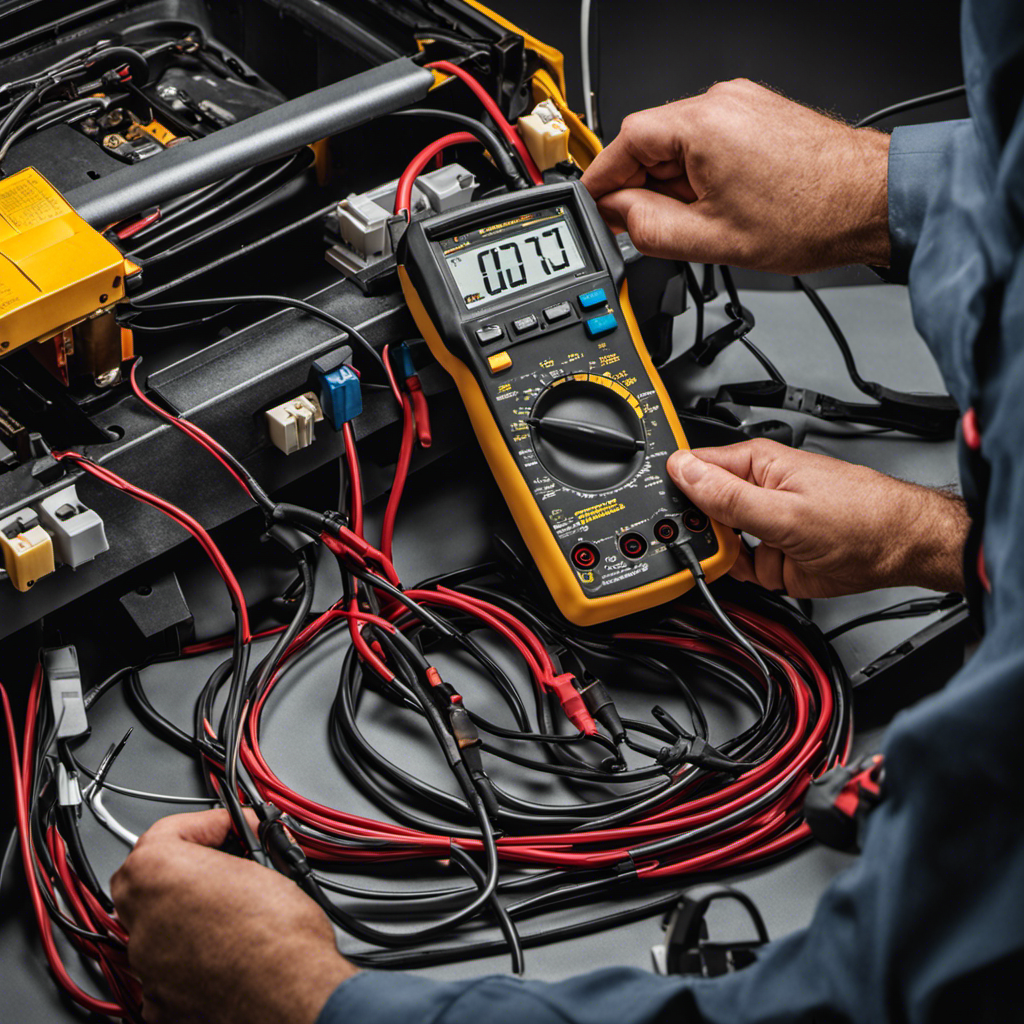Are you experiencing issues with your heater system?
Identifying the first step in diagnosing the problem is crucial for efficient troubleshooting. In this article, we will guide you through the initial steps to take when faced with a heater system malfunction.
By understanding the symptoms, checking the thermostat, inspecting air filters, testing the pilot light, and evaluating electrical connections, you will be equipped with the knowledge to efficiently diagnose and resolve heater system issues, ensuring optimal comfort and satisfaction for your customers.
Key Takeaways
- Understanding the symptoms of a heater system problem is crucial for technicians to identify common causes and apply appropriate troubleshooting techniques.
- Checking the thermostat is the first step when diagnosing a heater system problem, including ensuring the power supply, inspecting settings, and testing the sensors.
- Inspecting and cleaning or replacing air filters regularly is essential to maintain optimal performance and efficiency of the heater system.
- Testing the pilot light for a small, consistently burning blue flame is important, as a yellow or flickering flame may indicate a problem with the gas supply.
Understanding the Symptoms
Understanding the symptoms is crucial in accurately diagnosing a heater system problem. By recognizing the signs, technicians can identify common causes and employ appropriate troubleshooting techniques to resolve the issue efficiently.
One common symptom is inadequate heating, which can result from a faulty thermostat, clogged air filters, or a malfunctioning blower motor.
Another symptom is unusual noises, which may indicate a problem with the blower motor or loose components.
Additionally, if the heater system emits strange odors, it could be due to a gas leak or a build-up of dust and debris.
Understanding these symptoms helps technicians pinpoint the root cause and apply the necessary repairs or replacements. By doing so, they can ensure the heater system functions optimally and provides a comfortable environment for those they serve.
Checking the Thermostat
To begin diagnosing a heater system problem, technicians should start by examining the thermostat for any potential issues. The thermostat is a critical component that regulates the temperature in a heating system. If there is a problem with the thermostat, it can lead to issues with the overall functioning of the heater system.
When troubleshooting the thermostat, technicians need to follow a few key steps. Firstly, they should check the power supply to ensure the thermostat is receiving electricity.
Next, they should inspect the thermostat settings and make sure they are correctly adjusted. Additionally, technicians should test the thermostat’s sensors to ensure they are working properly.
Inspecting the Air Filters
The air filters play a crucial role in the proper functioning of a heater system, so it is important to inspect them as the next step in diagnosing any potential problems. Over time, air filters can accumulate dirt, dust, and other debris, which can hinder the airflow and reduce the efficiency of the heater system.
Regularly cleaning or replacing the air filters is essential to maintain optimal performance. When inspecting the air filters, it is important to check for any signs of clogging or excessive dirt buildup. If the filters are dirty, they should be cleaned or replaced as necessary.
Testing the Pilot Light
Inspecting the pilot light’s functionality and ensuring its proper operation is an essential step in diagnosing a heater system problem. The pilot light is responsible for igniting the gas that heats the air in the system. If the pilot light is not working correctly, it can result in a lack of heat or even complete system failure.
To troubleshoot the ignition, start by visually inspecting the pilot light. Look for a small flame that is consistently burning blue. If the flame is yellow or flickering, it may indicate a problem with the gas supply. In this case, checking the gas supply is crucial. Make sure the gas valve is open and that there are no obstructions or leaks in the gas line.
Evaluating the Electrical Connections
Ensuring the reliability and functionality of electrical connections is crucial when evaluating a heater system problem. Evaluating the circuitry and troubleshooting the wiring are essential steps in this process.
When assessing the electrical connections, it is important to check for loose or damaged wires, as well as any signs of overheating or burning. Inspecting the connections for corrosion or rust is also necessary, as these can hinder the flow of electricity.
Additionally, using a multimeter to measure voltage and resistance can help identify any issues with the circuitry. By thoroughly evaluating the electrical connections, technicians can pinpoint any faults or malfunctions that may be causing the heater system problem.
This ensures a safe and efficient heating system for the customers we serve.
Frequently Asked Questions
Are There Any Common Heater System Problems That Can Be Easily Fixed Without Professional Help?
Common heater system problems, such as a malfunctioning thermostat or clogged air filters, can often be resolved without professional help through basic troubleshooting techniques. It is important to identify these issues before proceeding with a diagnostic process.
How Can I Determine if My Heater System Problem Is Related to a Faulty Thermostat or a Malfunctioning Pilot Light?
When troubleshooting a heater system, it is important to determine whether the problem is related to a faulty thermostat or a malfunctioning pilot light. This can be done by carefully examining the system’s behavior and conducting a thorough inspection.
Are Certain Heater System Problems More Common in Specific Types of Heating Systems, Such as Electric or Gas Heaters?
When diagnosing a heater system problem, it is important to first identify the type of heating system being used, such as electric or gas. Each type may have its own set of common issues and safety concerns.
Can a Dirty Air Filter Cause the Heater System to Malfunction in Ways Other Than Reduced Airflow?
A dirty air filter in a heater system can cause malfunctions beyond reduced airflow. It can lead to overheating, inefficient heating, and potential damage to other components. Regular filter maintenance is crucial to prevent such issues.
What Are Some Signs or Symptoms That Indicate a Problem With the Electrical Connections in a Heater System?
Signs and symptoms of electrical connection problems in a heater system may include intermittent heating, complete failure to produce heat, or abnormal noises. Troubleshooting such issues involves inspecting connections, checking for loose wires, and ensuring proper voltage supply.


